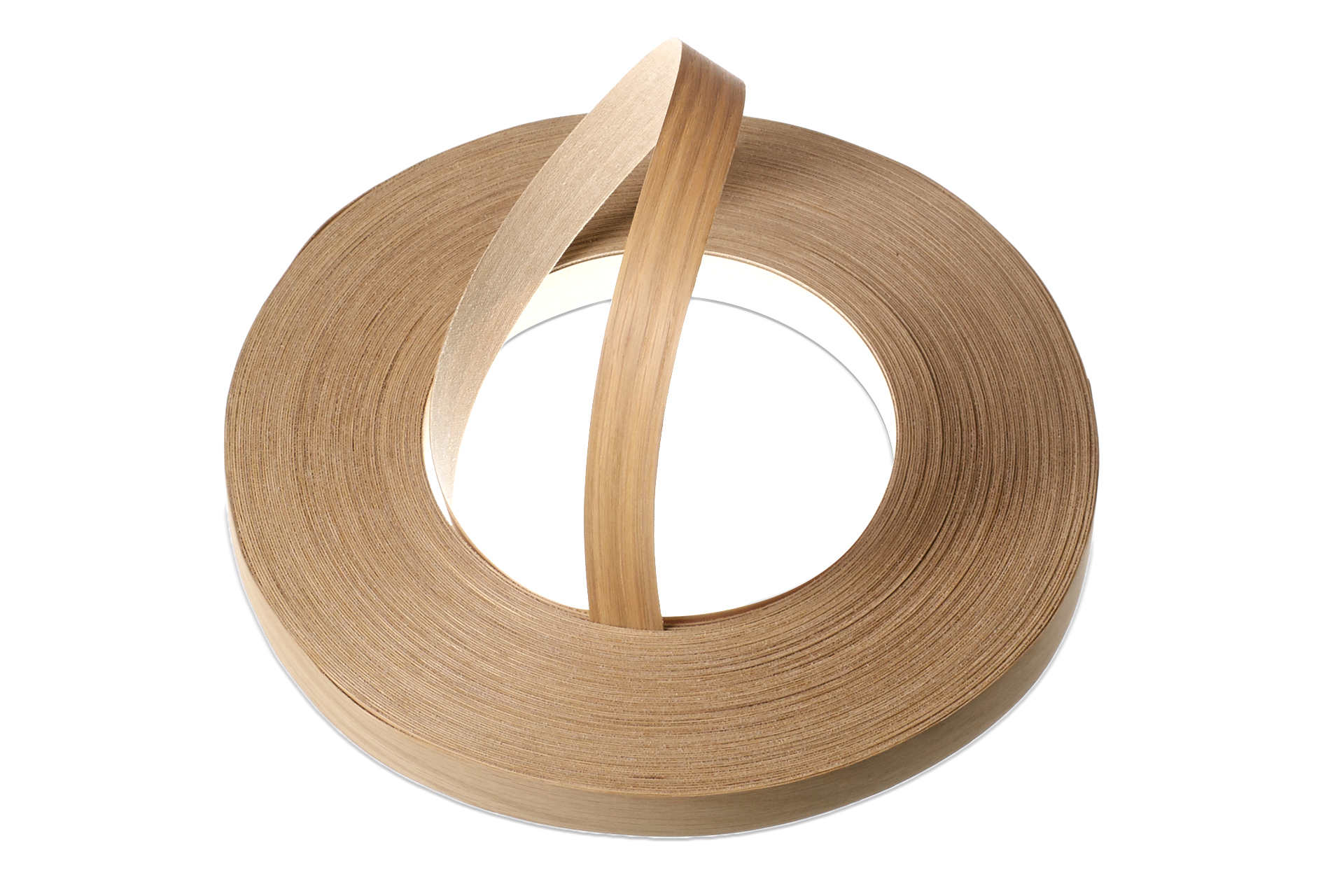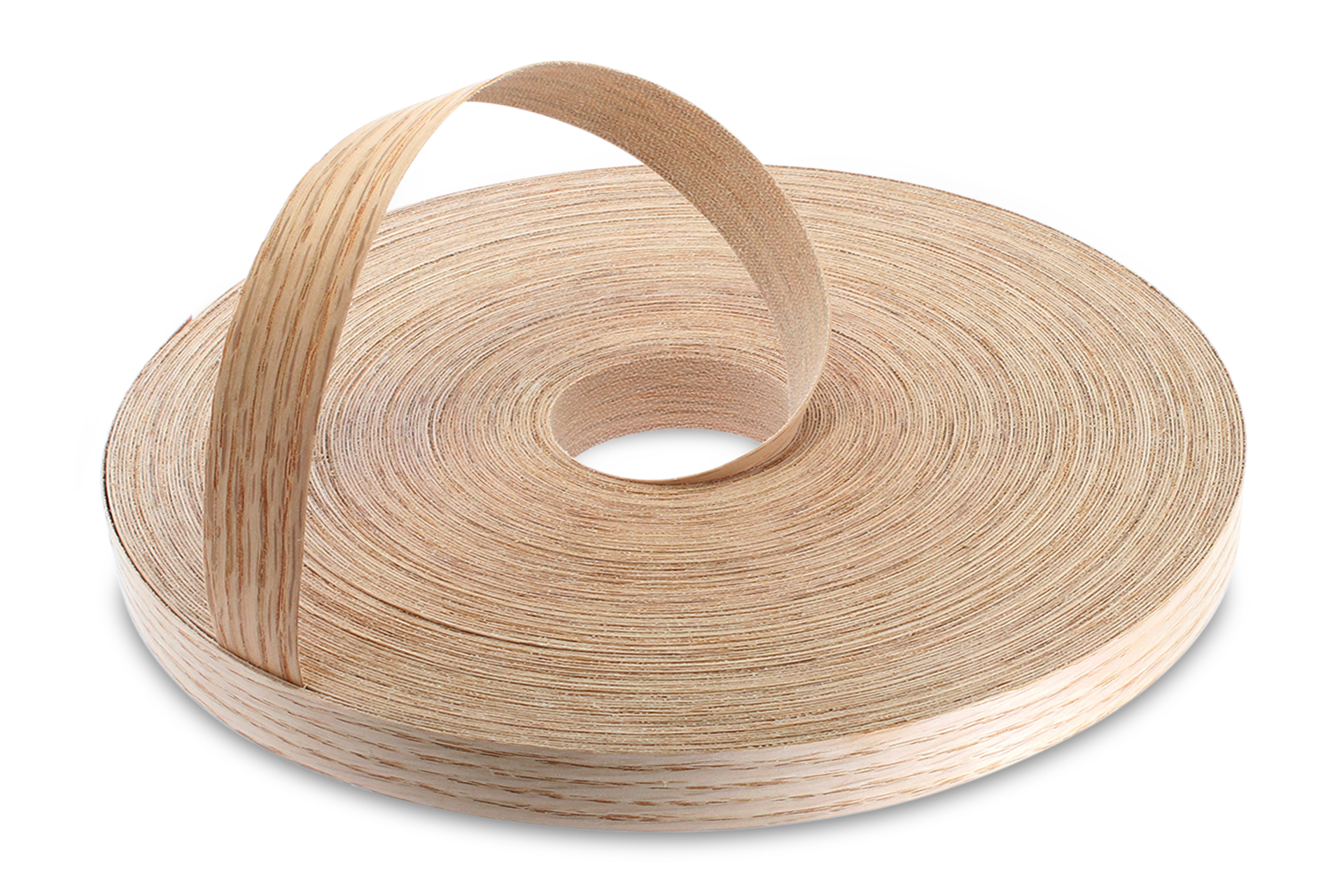-
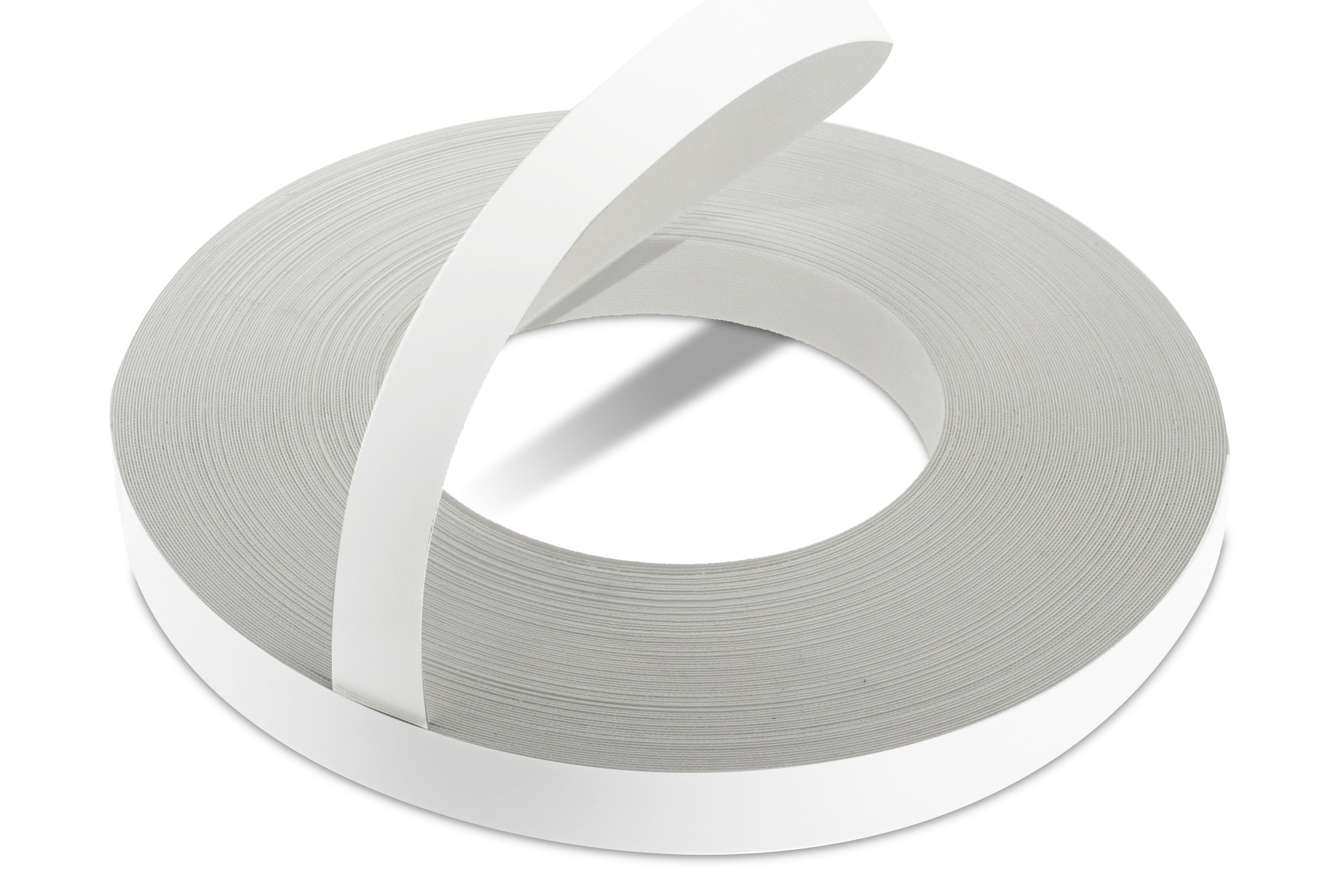 WoodPress® White Matt Melamine Edge Banding - Pre-Glued Iron-On Tape - 50m Length Roll
£14.96 – £24.96 + VAT (£17.95 - £29.95 inc. VAT)
WoodPress® White Matt Melamine Edge Banding - Pre-Glued Iron-On Tape - 50m Length Roll
£14.96 – £24.96 + VAT (£17.95 - £29.95 inc. VAT) -
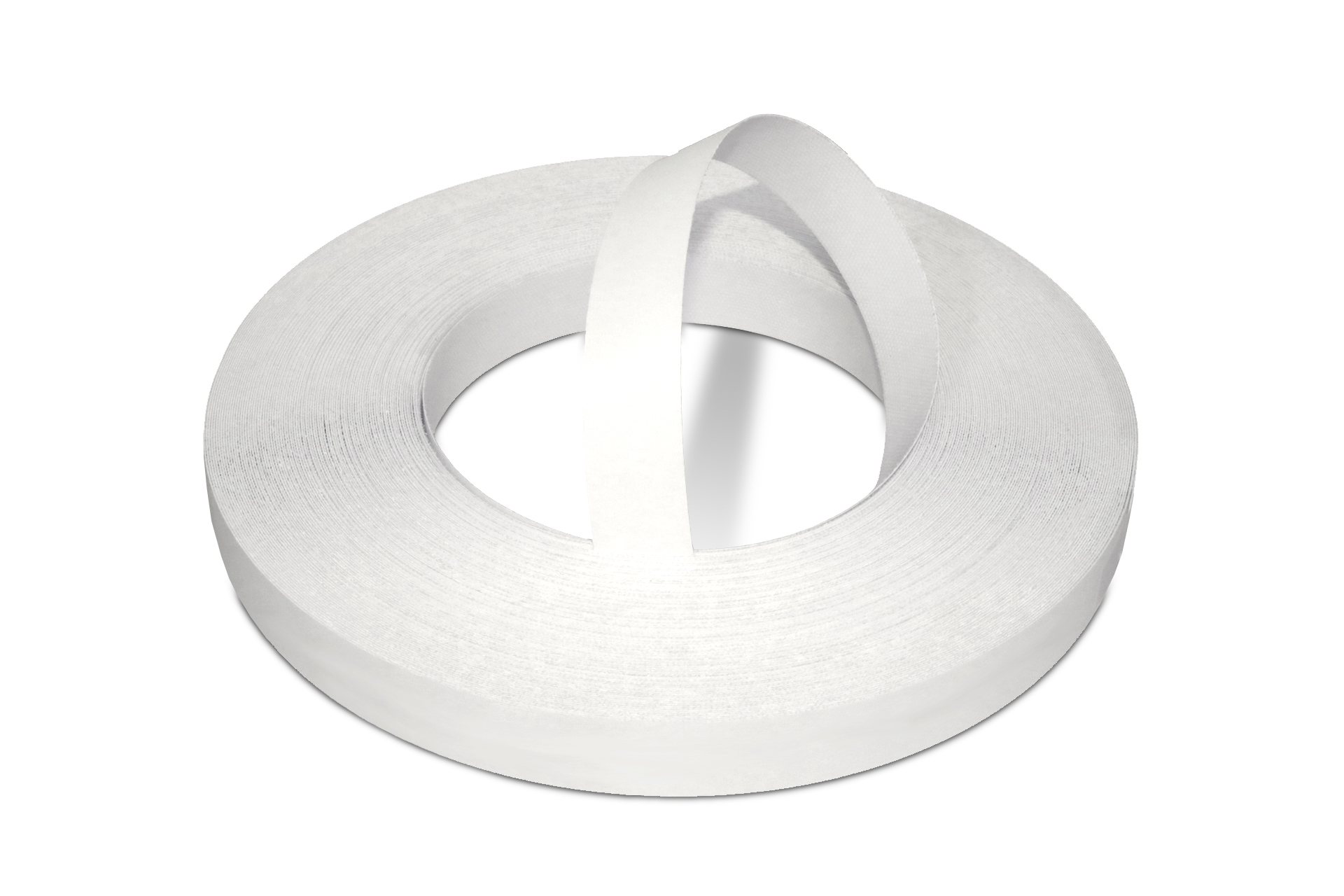 WoodPress® White Pearl Melamine Edge Banding - Pre-Glued Iron-On Tape 50m Length Roll
£14.96 – £24.96 + VAT (£17.95 - £29.95 inc. VAT)
WoodPress® White Pearl Melamine Edge Banding - Pre-Glued Iron-On Tape 50m Length Roll
£14.96 – £24.96 + VAT (£17.95 - £29.95 inc. VAT) -
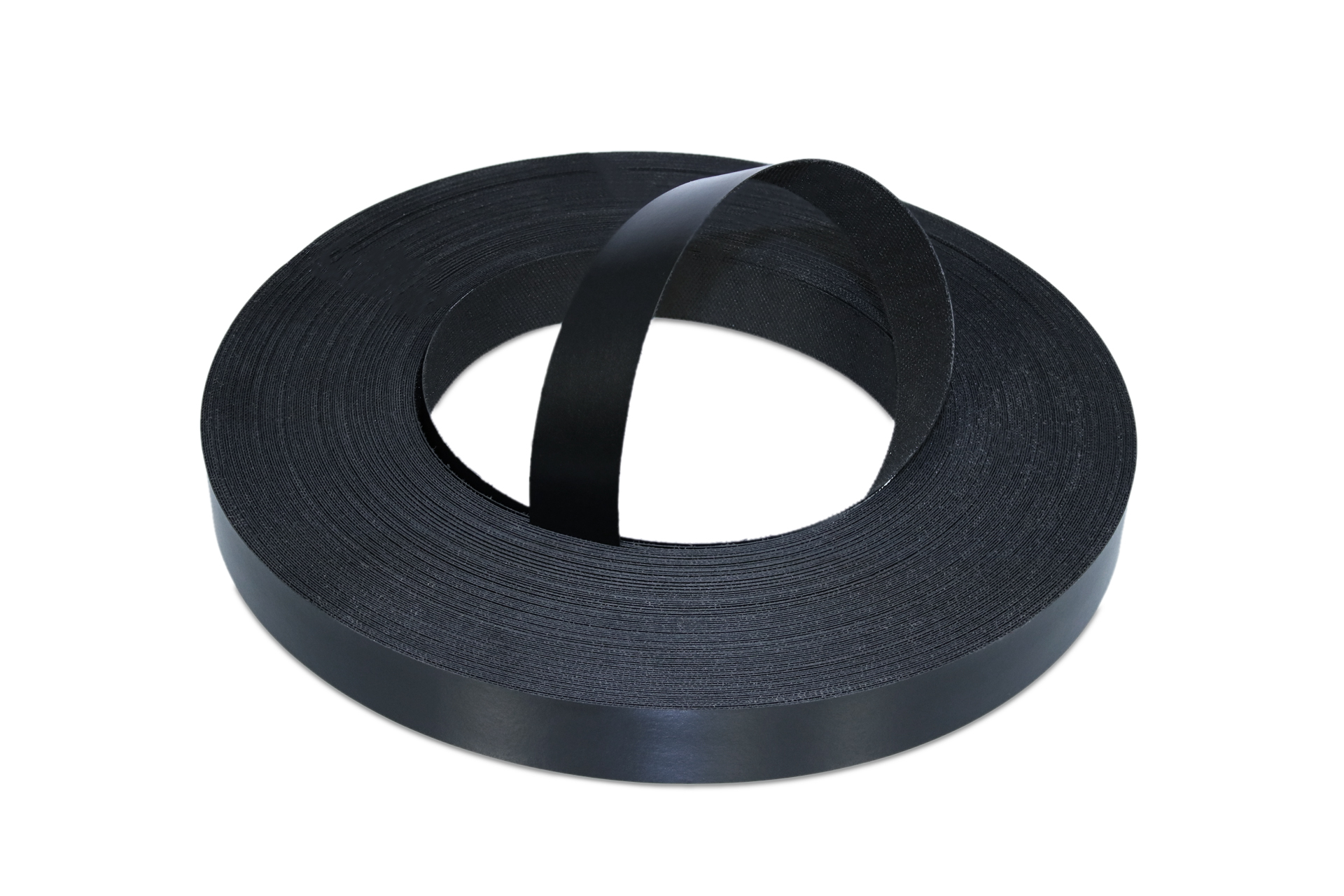 WoodPress® Black Matt Melamine Edge Banding - Pre-Glued Iron-On Tape - 50m Length Roll
£14.96 – £24.96 + VAT (£17.95 - £29.95 inc. VAT)
WoodPress® Black Matt Melamine Edge Banding - Pre-Glued Iron-On Tape - 50m Length Roll
£14.96 – £24.96 + VAT (£17.95 - £29.95 inc. VAT)
Wood Veneer Species Guide
If you are a beginner woodworker or DIY enthusiast, you may have trouble identifying which edge banding or wood veneers best match the species of wood you are already using in your project.

Some wood species can look very similar, such as oak and red oak, or maple and birch. This guide will provide you with the knowledge needed to differentiate between these species and ensure your project looks seamless, even if the wood tones vary slightly.
It is important to acknowledge that wood is a naturally sourced material, meaning each tree, each part of the same tree, and even veneers produced from the same log, can result in varying shades and grain patterns.
This is why most professional woodworkers finish their veneers with wood oils, stains and varnishes, to create a uniform result for a given piece.
However, it is still possible and sensible to achieve a close match by correctly identifying the wood species, which this article will guide you through.
Before we begin, let’s talk about grain patterns, since this is also something to consider when looking to match visible veneer. Stating what might seem obvious, the grain in wood is identified as the darker lines and swirls running through the veneer.
Grain patterns are mainly affected by the way in which a timber log is sliced, causing them to either run straight or create curved lines and swirls (sometimes known as burls). The grain is created by the way the wood fibres grow, depending on the climate, porosity, wood species and the individual tree, the grain pattern will appear different for every log.
This is quite incredible when you think about it, and why there is such beauty to be found when working with wood.

Below are some brief descriptions of the main wood veneers we sell; if you’d like to know about others or have a specific question, just contact us.
Oak
Also known as white oak, is one of the most used wood species in woodworking. This is because it is one of the most durable and non-porous woods, as well as having a versatile aesthetic.
It has a pale yellow to brown colour, which we sometimes refer to ‘biscuit brown’, and can have a slight pink or olive tint, which can make it difficult to distinguish from red oak.
The best way to identify white oak is by examining its grain; white oak has a distinct but relatively light grain pattern with smaller pores, meaning it has a smoother surface texture and is less absorbent to moisture.
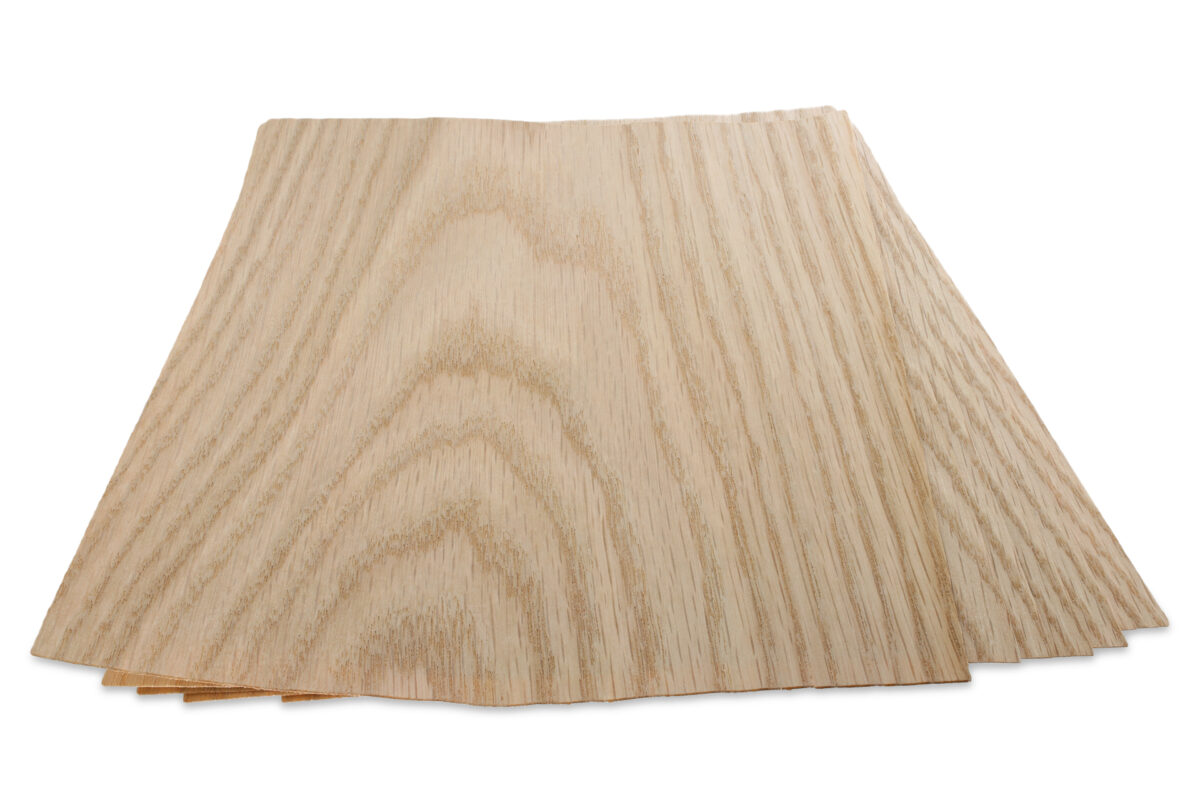
Red Oak
Red oak, while very similar to white oak, has a more pronounced pink or red hue and a stronger grain pattern which tends to manifest with wider lines, which is the easiest way to tell them apart.
Where possible, you can also hold red oak and white oak side by side and compare the intensity of the red hue (see our comparison below).
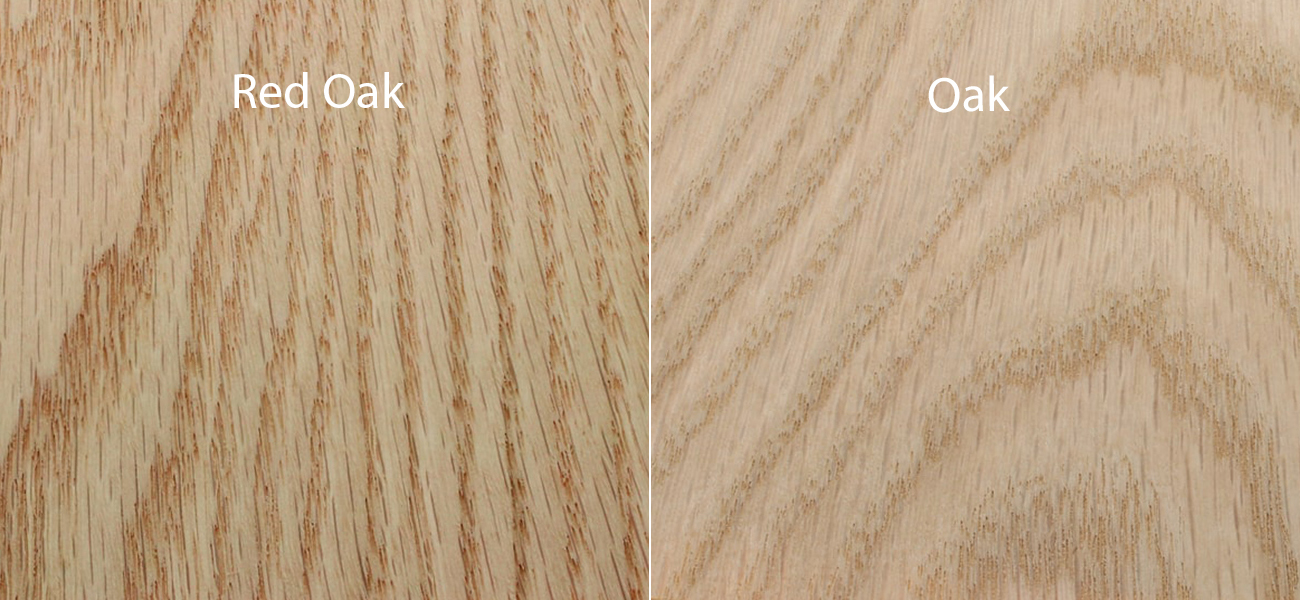
Red oak also has a higher porosity than white oak making it less dense and more absorbent of liquids.
Maple
Maple is identifiable by its colour and tight grain, which is due to its small pores. The colour is a pale, peachy yellow, though this can vary like any wood veneer.
We find maple easiest to identify by its texture—it is typically firmer, more ‘card-like’ and smooth in texture compared to other veneers.
Birch (Maple’s Evil Twin)
Birch looks remarkably like maple in both colour and grain. However, it can be distinguished by the slight shimmer it produces when moved against the light.
Birch also has a more fragile texture and is significantly easier to bend than maple. You may not know this, experts often use taste and smell to differentiate veneers. Between birch and maple, maple is thought to have a slight sweetness when licked, while birch is bitter. This is similar with smell…
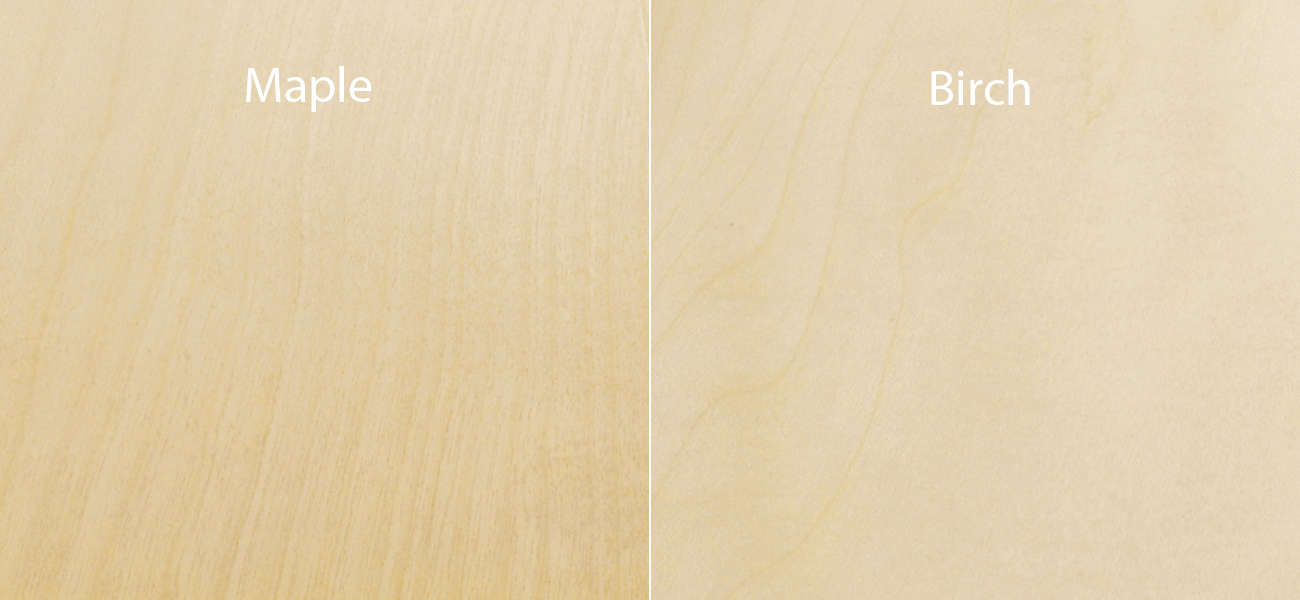
Beech
Beech is notable for the flecks in its grain, scattered across its surface. The colour of beech veneers depends on whether they have been steamed. This is a common practice as it enhances the colour of beech.
Our beech veneers are indeed steamed, giving them a medium reddish-beige colour with some pinkish hues. Non-steamed beech, on the other hand, is lighter and is sometimes called white beech. It is closer in colour to maple.
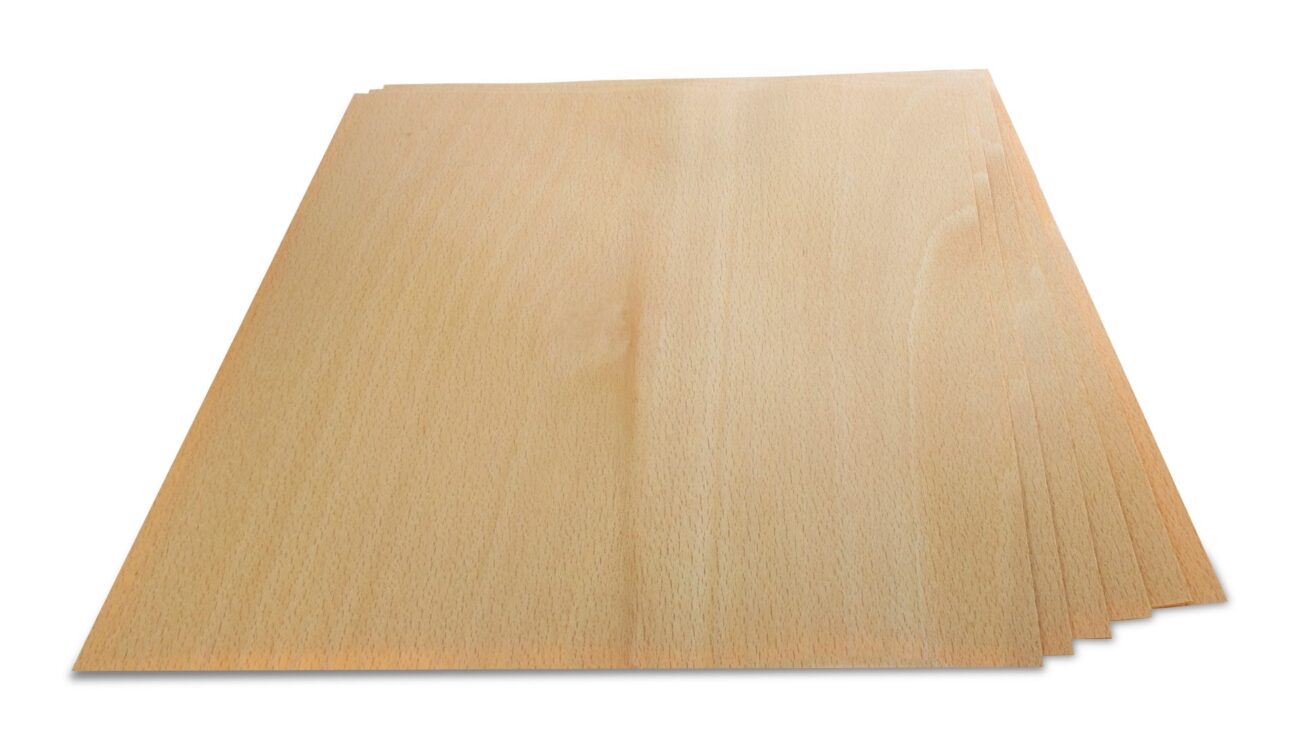
Walnut
Walnut is one of the easiest veneers to identify due to its medium to dark chocolate brown colour.
It has an even darker grain pattern that gives it a rich, luxurious look. When varnished, the chocolate tone, gives way to lustrous browns and vivid grains.
Walnut is also a durable wood making it a popular choice for woodworkers, along with its sustainability. Walnut’s hue will mellow over time when exposed to sunlight, making it lighter, with some yellow hues.
Walnut is one of the few woods that are considered semi-porous, meaning its grain falls somewhere between porous woods such as oak and less porous woods such as maple. This will mean that the distinction of the grain will be moderate.
Wenge
Wenge (pronounces weng-gay), also known as African rosewood is a very dark chocolate brown tropical wood with slight red tints, black streaks and a natural lustre.
It has a straight grain and is one of the more durable and dense woods and therefore can be used for outdoor furniture. However, it is course and heavy, making finishing furniture with it a job for the more seasoned woodworker.
But with the right knowledge, equipment and finishing products, wenge furniture is visually stunning.
Common uses also include flooring and musical instruments. Because it comes from a slow growing tree, pricing of wenge can be expensive and sustainability is problematic.
Wenge and walnut are not very difficult to tell apart, but they can be close in colour occasionally.
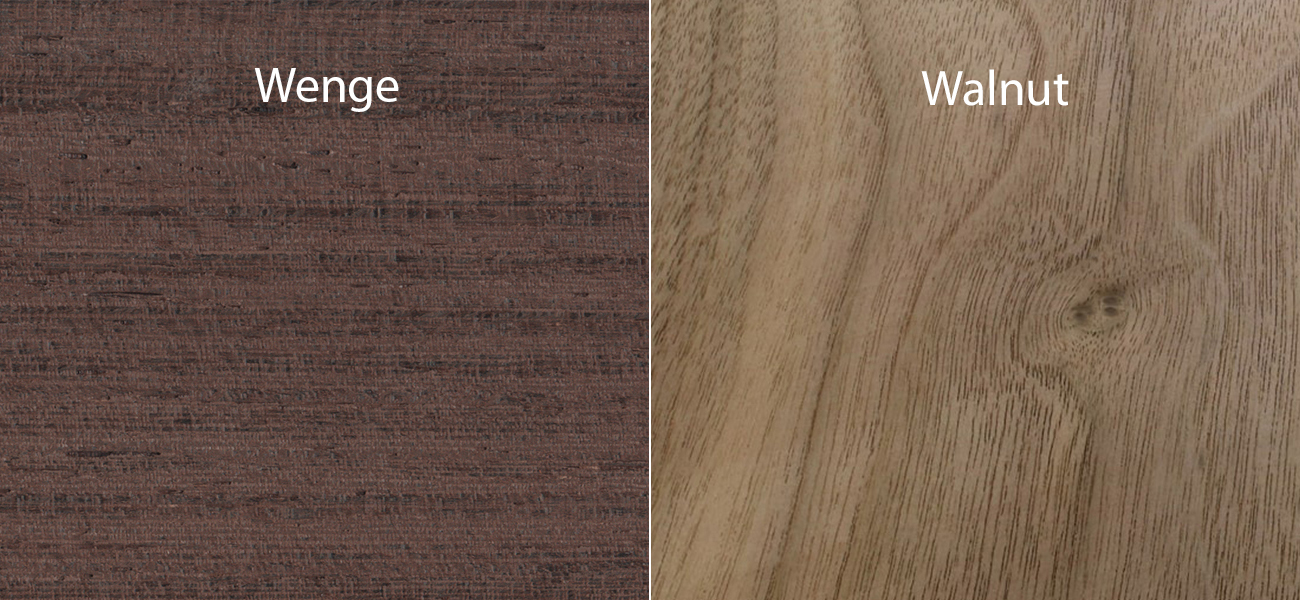
Mahogany / Sapele
Real mahogany is an endangered species due to overharvesting and is extinct in many of its native lands such as El Salvador and Costa Rica, making harvesting mahogany illegal in most countries.
This means, unless you are lucky enough to score a vintage piece of real mahogany, the mahogany you buy today is its cousin, sapele (pronounced sap ee lee). Sapele has a similar appearance to mahogany but there are some distinct differences; mahogany has a slightly darker, redder colour than sapele, while its grain tends to be more distinct. However, they are both tropical woods and can be mistaken for each other.
They are both incredibly durable woods and have been a staple of the furniture making for centuries.
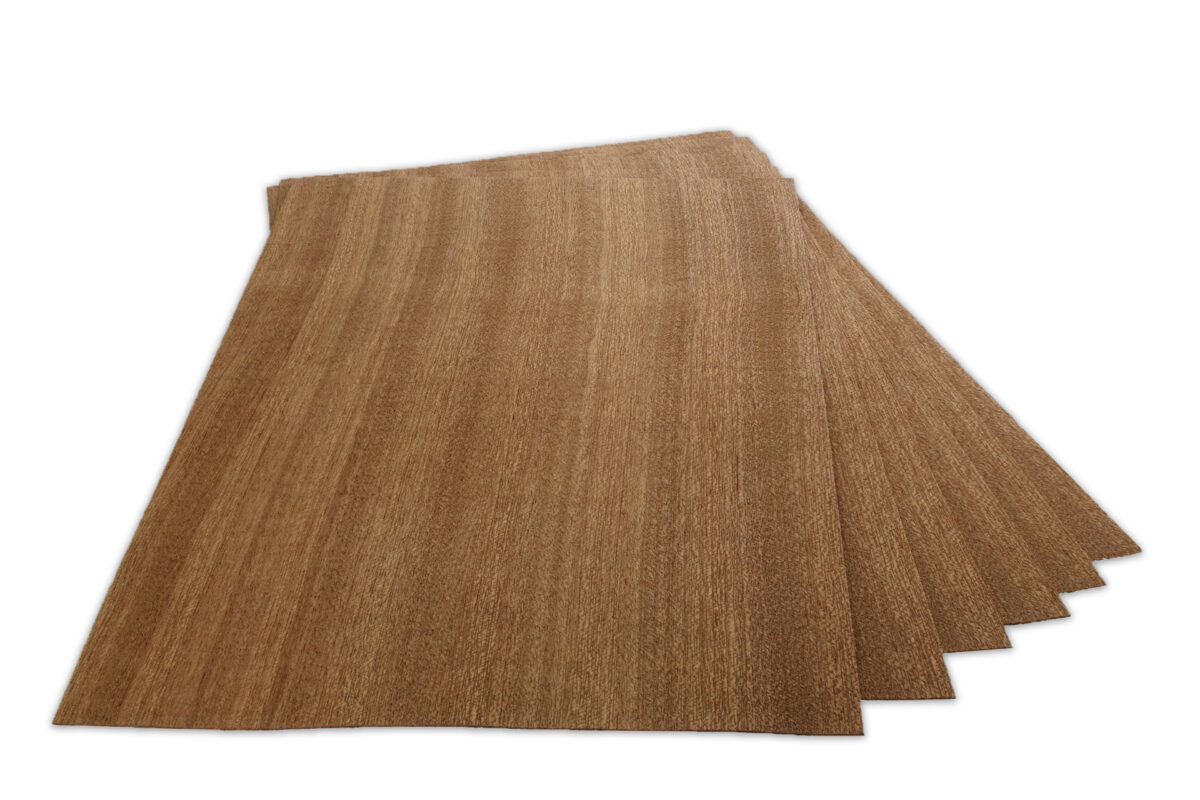
Cherry
Cherry is a warm pinkish-brown wood veneer with a fine grain, smooth texture and sheen, giving it a naturally polished look. Over time, its colour deepens to a richer, more lustrous shade when exposed to light.
The grain is generally straight but can occasionally have slight waves, adding a touch of character to the wood. Cherry wood is known to be easily workable exotic species, making this a good choice for the furniture maker looking for a luxurious finish.
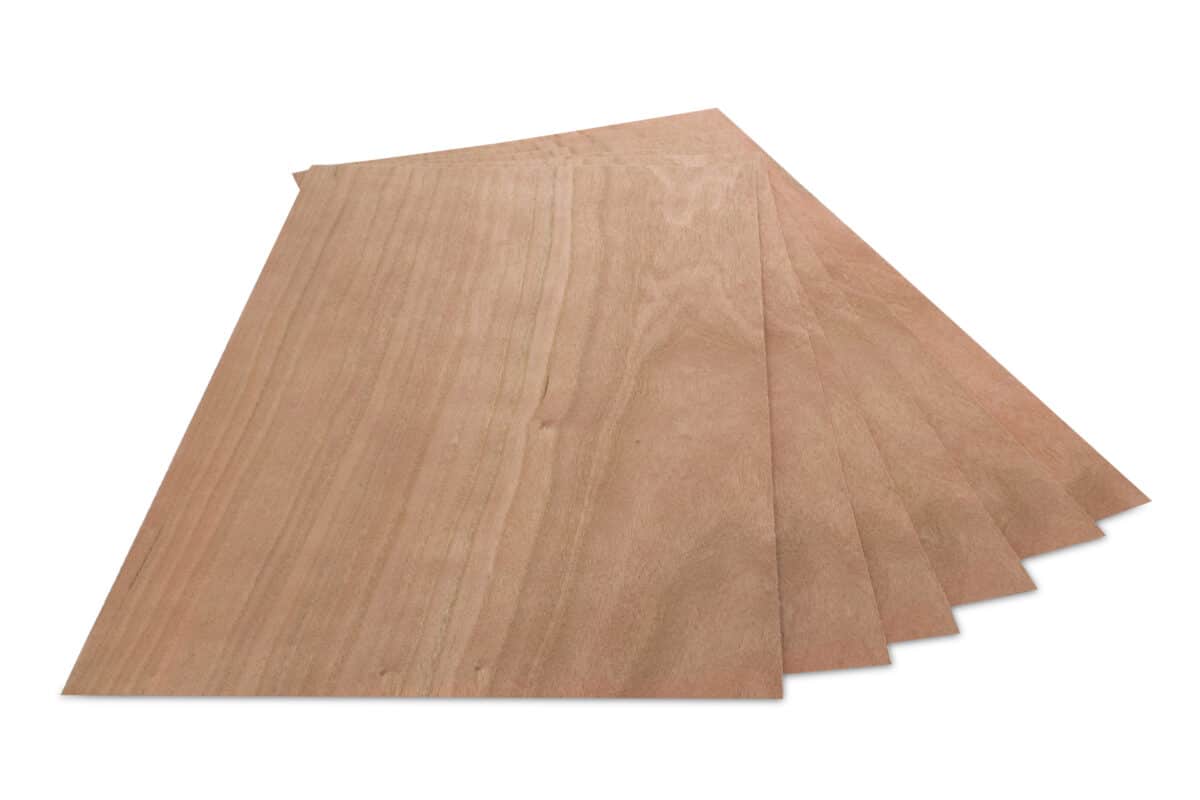
Koto
Koto is a tropical hardwood indigenous to West and Central Africa. It is a pale to medium yellow colour and typically has a straight grain with occasional light interlocking elements (caused by the tree’s fibres growing in opposite directions).
Koto is a more delicate wood and has to be maintained to prevent rotting and infestation. It is generally only used for furniture and interiors but is a great choice for producing ‘minimalist’ style pieces and wall panelling.
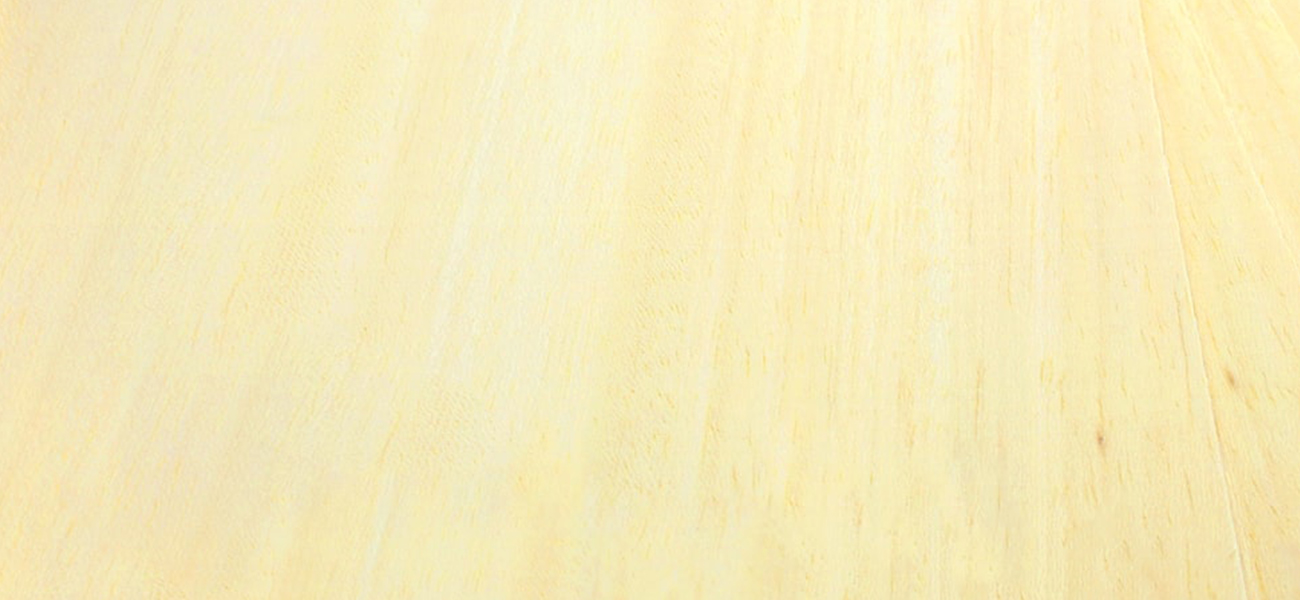
Pine
Pine had its day thanks to Ikea, which used it heavily from their launch in the 1950s, taking it from being a convenient building material to the heights of rustic chic in the 1980s. It’s less popular for furniture making these days, but still offers good results and is easily workable, so you can expect to see it being used in wooden handles, walking sticks, picture frames, etc.
It usually has a strong yellow colour with flecks of dark brown grain burl. It has a straight to wavy grained which usually flow in one direction. It is a less porous wood, making it more durable and good for furniture making.
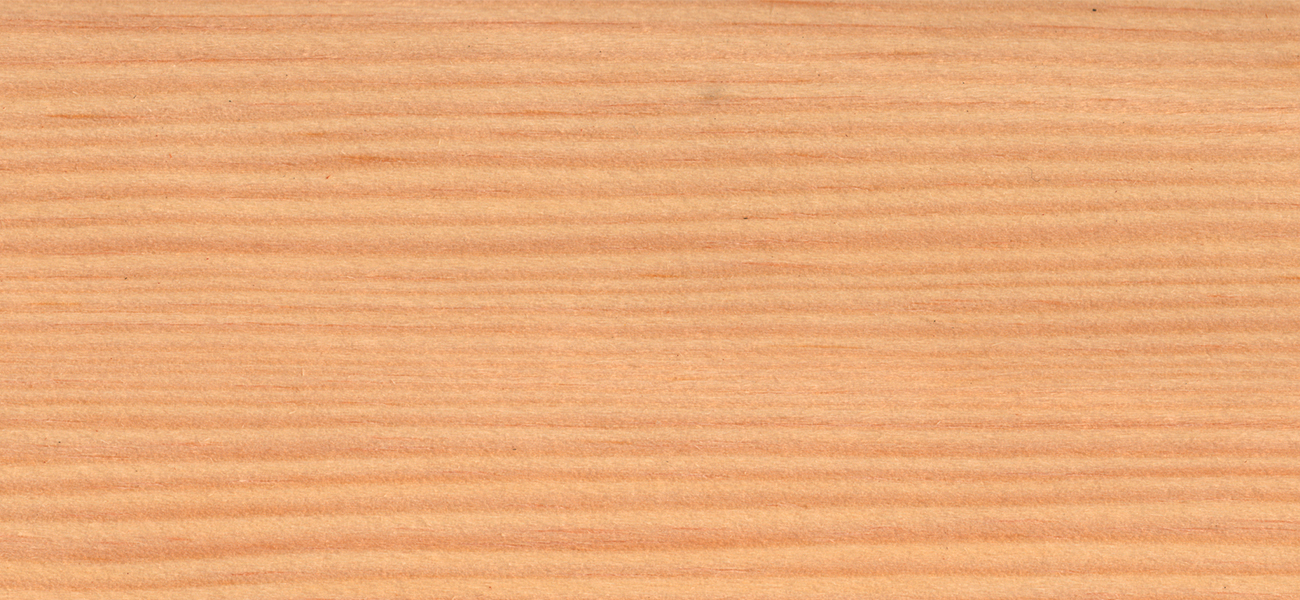
Conclusion
We hope you found our brief guide useful. Even with descriptions and visual references, identifying wood species can still be challenging.
It is also important that this distinction is applied when building projects, as the right wood should be matched to the right application. If you need further assistance in selecting the right veneer for your project, please feel free to contact us.


